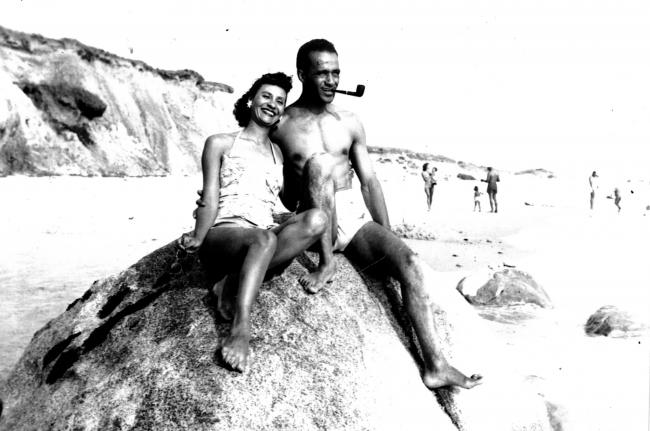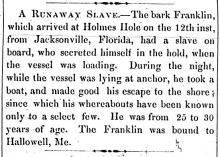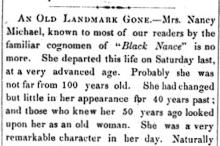Life Magazine photographer Gordon Parks gave a talk at the Union Chapel in Oak Bluffs on Wednesday night. For the Vineyard it was a first. The 79-year-old black artist not only in photography but in the fields of prose, poetry, movies and music stood before an audience of 150 people and said that he is creatively stronger than ever.
At every opportunity, the audience applauded. Included in a program of slides were not only photographs that are known around the world but images from his latest efforts, which will be published soon in a book.
Mr. Parks was introduced to the audience as “a man for all seasons” by Della Hardman, a longtime friend.
She introduced him as a photographer whose works had appeared in a number of books and publications including Vogue and Life. And she told how his book The Learning Tree, an autobiography, was one of 11 he had written.
Mr. Parks told the audience that this was an important visit to the Island for him because it gave him a chance to visit his daughter in law, Leslie Parks, and 13-year-old grandson Gordon.
Elegantly dressed and with a bandanna around his neck, Mr. Parks spoke about growing up in Kansas and learning early about racism. “I was the youngest of 15 children,” he said. “I had a wonderful childhood.”
Of his work in so many different mediums, he said that to this day: “I’m a deep romanticist.”
He described how he got his first camera when he was in his 30s. And after having visited museums in Chicago and watching a film about the sinking of a ship by the Japanese he took an interest in photography.
“I went to Seattle and bought my first camera for $12.50. It was a Voigtlander Brilliant,” he said. “With a name like that, it had to be a nice camera.”
On his first photo project his enthusiasm took him too far: he fell into Puget Sound while trying to photograph seagulls. Some of the pictures in the camera came out. Eastman Kodak processors were so impressed by his work that he was invited to have an exhibition three months later.
In St. Paul, Mr. Parks went into a fashion store called Frank Murphy’s and offered to do fashion photography. Mr. Parks said that Mr. Murphy was ready to dismiss him when his wife Madeline suggested that her husband give the young man a chance. That launched him into fashion photography.
Talent and good luck followed. Mr. Parks started working for the Farm Security Administration and recalled a favorite photograph that helped further his work as a photographer. It was a picture of Ella Watson, a cleaning woman, standing in front of a huge American flag. “That is perhaps my best known photograph,” he said.
Mr. Parks went on to shoot for Life Magazine and other publications. His photography took him to Paris, to Italy, Scandinavia, Hawaii, Japan and elsewhere.
His work included fashion, celebrities and crime.
“I feel that I am fulfilling a dream that chance has put inside me,” he said. “I have tried to use my camera to speak for those who can’t speak for themselves.”
His work brought him close to the members of a Harlem gang. “I spent three months with the gang,” he said. “Some of the boys were fine kids. Red Jackson could have been a great leader.”
In Rio he did a photo essay about poverty and met an ailing 12-year-old youngster named Flavio da Silva, who became an important part of the essay. Mr. Parks’ work shook the readers of Life. Contributions to save the poor boy poured into the magazine. Money was raised to give the youngster the medical attention he desperately needed. Of much of his work on crime and poverty for Life, Mr. Parks said: “There was no happiness in these stories, though some good did come out of them.”
While shooting for Life, he found other forms of expression: poetry, writing and music.
A piano concerto written by Mr. Parks was performed in Venice. In later years he wrote an autobiography called The Learning Tree. The book was later turned into a movie. Mr. Parks talked to the audience about how he became its director.
The program then shifted to the showing of slides and to a question and answer period. Mr. Parks said that in New York city where he lives he is now working on a new book. The book would combine his photography with another skill - watercolor painting.
He showed favorite pictures taken over the years and said that his publisher is working on a retrospective.
One image drew a revealing response from Mr. Parks. It was a picture of eels in a pile at a Japanese fish market. The eels were cast in a warm light. The picture was not as it first appeared, but was warm and sinewy. “I romanticize everything, even bricks.”
Following the program a champagne reception was held at Papa’s Pizza down the street.










Comments